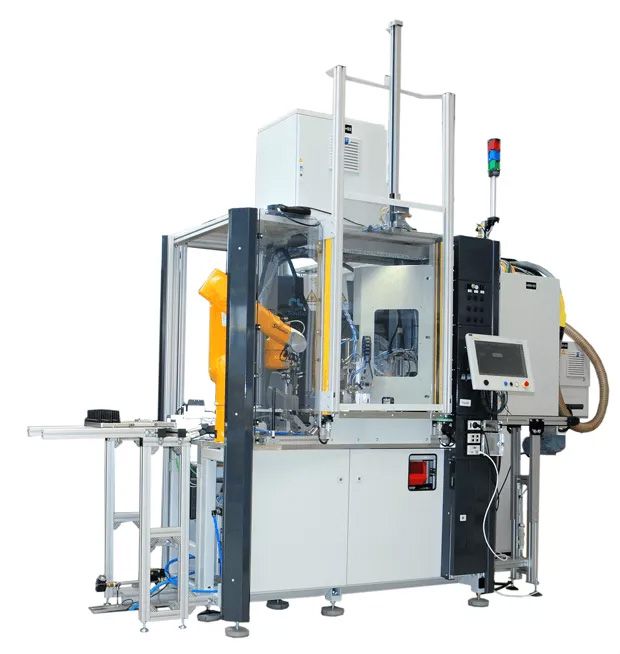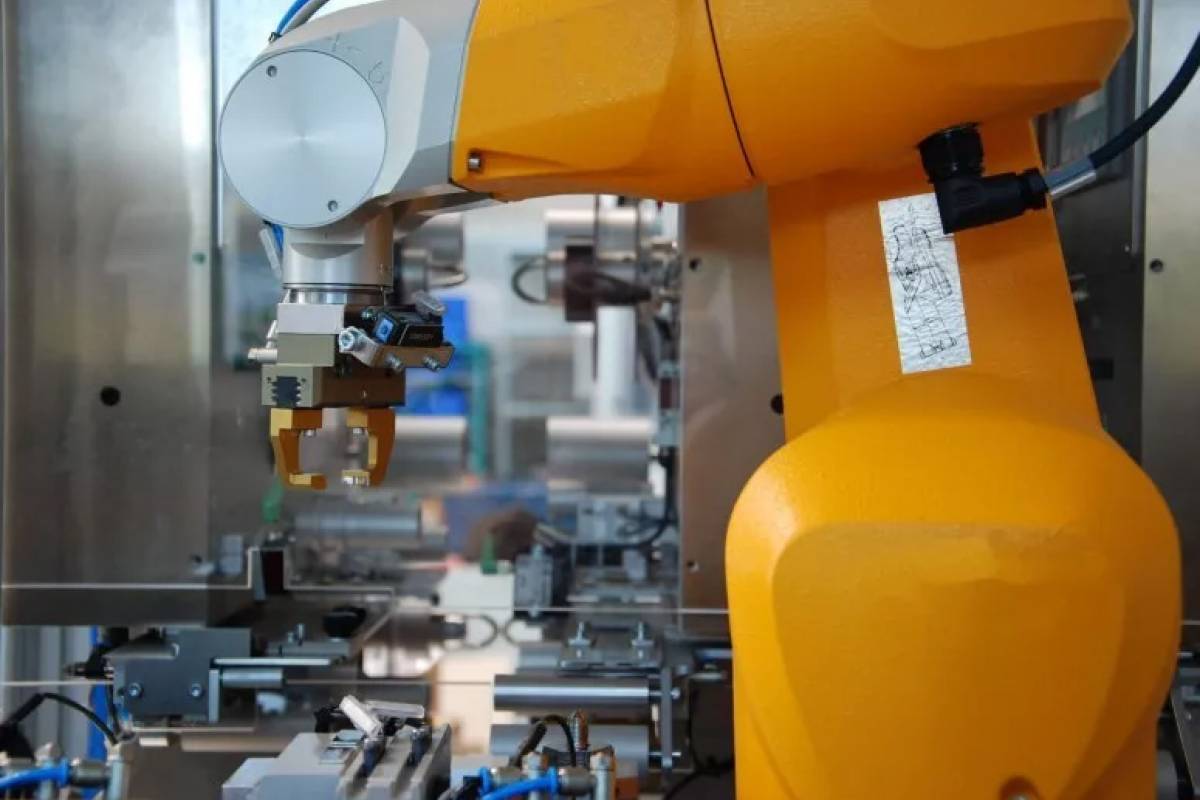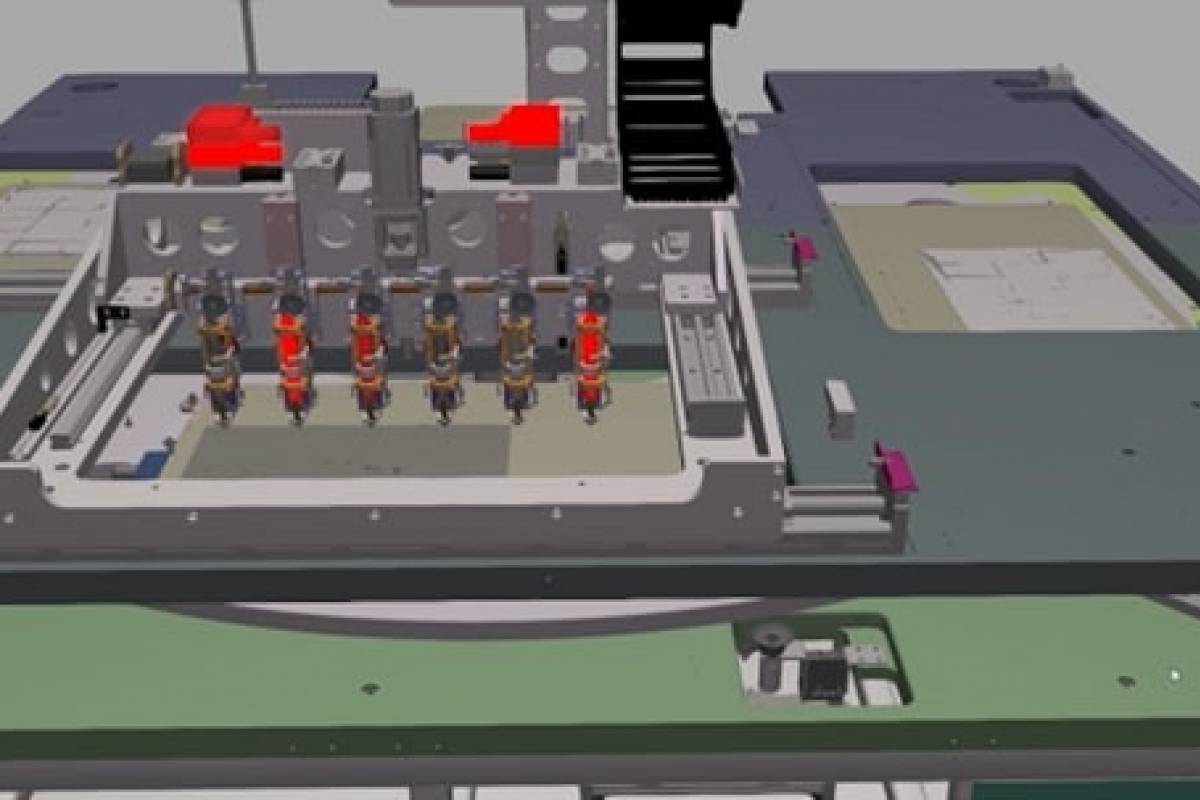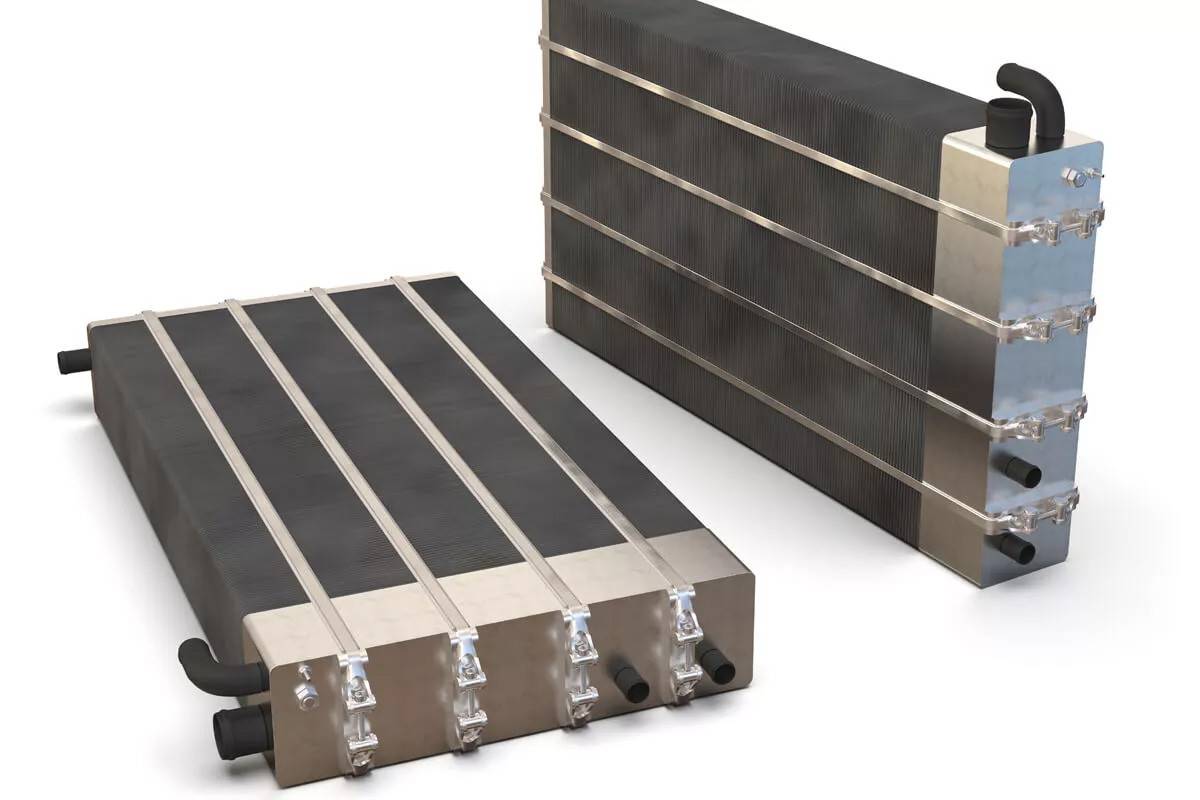
In small and medium-sized companies, the use of "classic" robot systems has been difficult to date. The high space requirements, physical separation from humans, high investment costs and inflexible programming pose major problems.
Flexible assembly systems integrate intelligent robot systems into the production process, which work with and next to their human colleagues without any separating protective equipment. New methods of human-machine interaction, which can be used to program and configure the robot-supported production steps, open up special perspectives.
Flexible assembly systems must be able to assemble the variants of a product family in any order-specific sequence. They should be able to be quickly converted from one product to another, ideally between two cycles. In addition, a large proportion of the standard modules used should be reusable for use in new assembly tasks.

Assembly robot
According to VDI guideline 2860, an assembly robot is an automatic handling machine that is freely programmable in several axes of movement and is equipped with grippers and tools with which it can perform assembly tasks automatically. As a rule, assembly robots have three to five axes of movement whose sequence of movements can be freely programmed without mechanical intervention.
To carry out assembly tasks, the robot, which is normally mounted on a robot table at working height, must be equipped with specific peripheral components. Grippers are attached to the assembly robot for parts handling, while robotic tools, such as a soldering tool or a glue gun, are used for process tasks. If several grippers or robotic tools are required in a work process, tool changing systems are used, allowing the robot to automatically select the required gripper or tool from a magazine in any order.
Assembly robots are equipped with various sensors that allow them to recognize certain position and component states and control the movement sequences accordingly.
Flexible assembly cells and assembly systems
The individual parts to be assembled must be presented to the assembly robot in a way that is suitable for gripping. Automatic sorting and feeding devices, such as vibratory bowl feeders, are used for this purpose.
In order to automatically transport the workpieces into and out of the work area of the assembly robot, interlinking devices are used on which workpiece carriers are used as holding devices and means of transportation for the products to be assembled.
If an assembly robot is set up with the aforementioned peripheral components as a single system, this is referred to as a flexibly automated assembly cell. In a flexibly automated assembly cell, one or more assembly processes can be carried out fully automatically on different products or product variants.
Interlinking assembly cells results in a flexible assembly system that can contain automated assembly cells as well as manual workstations or hybrid stations that are decoupled from the work cycle. The assembly cells are linked together in a flexible assembly system by a conveyor system.
Motivation for the use of assembly robots
Many products are still not suitable for automatic assembly or the cost is not economically justifiable. Another reason why assembly robots are still relatively uncommon is that there is no one assembly robot that solves every problem. In the past, the technical solutions for many processes, such as soldering with robots, were not yet available on the market.
On the other hand, there are many reasons in favor of flexible automated assembly with robots:
Increasing types and variety of products
Shorter product lead times, with more frequent model changes
Decreasing quantities with long changeover times and low capacity utilization
Increased demands on product quality
High throughput times with large inventories and high capital commitment
Stressful, monotonous and unhealthy activities
Assembly robots are suitable flexible operating resources that meet the resulting demands on assembly systems. If necessary, an assembly robot can be quickly converted. In the simplest case, this is done by changing the sequence program in a matter of seconds, but even if major changes are made to the product, the robot can be equipped with other grippers and peripheral components and take on completely new tasks.
The decisive factor for the industrial user is that the robot and its components are no longer a special design with all the associated risks, but are now manufactured in series as part of a modular system.
Programming
Flexible assembly systems should be easy and quick to program. At this point, two new programming options will be discussed, which were presented by smerobotics in collaboration with the Fraunhofer Institute at Automatica 2016.
The first option is a simplified graphical application-oriented method. On the one hand, this relies on skill-based graphical programming interfaces. The robot has various skills for this, such as moving, gripping, turning, etc. These can be clearly arranged by a specialist in the form of blocks.
Another option is to create complex assembly sequences directly in a CAD model, independently of a specific robot system. The movements of the actual robot system are then calculated independently by powerful software. Modern software relies on artificially intelligent software whose learning algorithm is similar to that of humans. With the help of these knowledge-based learning algorithms, suitable skills for a task can be found and combined automatically. In tests, skilled workers with no robotics experience were able to program assembly tasks 10-15 times faster than experienced robot programmers with handling devices.
Integration into hybrid assembly systems and cost-effectiveness
Depending on the degree of automation and the complexity of the product, the costs for peripheral elements, such as feeders, often significantly exceed the basic costs for assembly robots, controllers, etc. Semi-automation is therefore usually a more economical solution. Semi-automation is when manual activities are included in the closed assembly system.
Similar rules apply to the workspace design of flexible assembly systems as to the design of manual workstations.
The gripping paths for picking and placing must be as short as possible in order to keep the secondary effort to a minimum
As the gripper changeover time represents a secondary expense, either multiple grippers should be used to handle different parts or tools, or the assembly process should be converted from piece-white production to set-white production.


